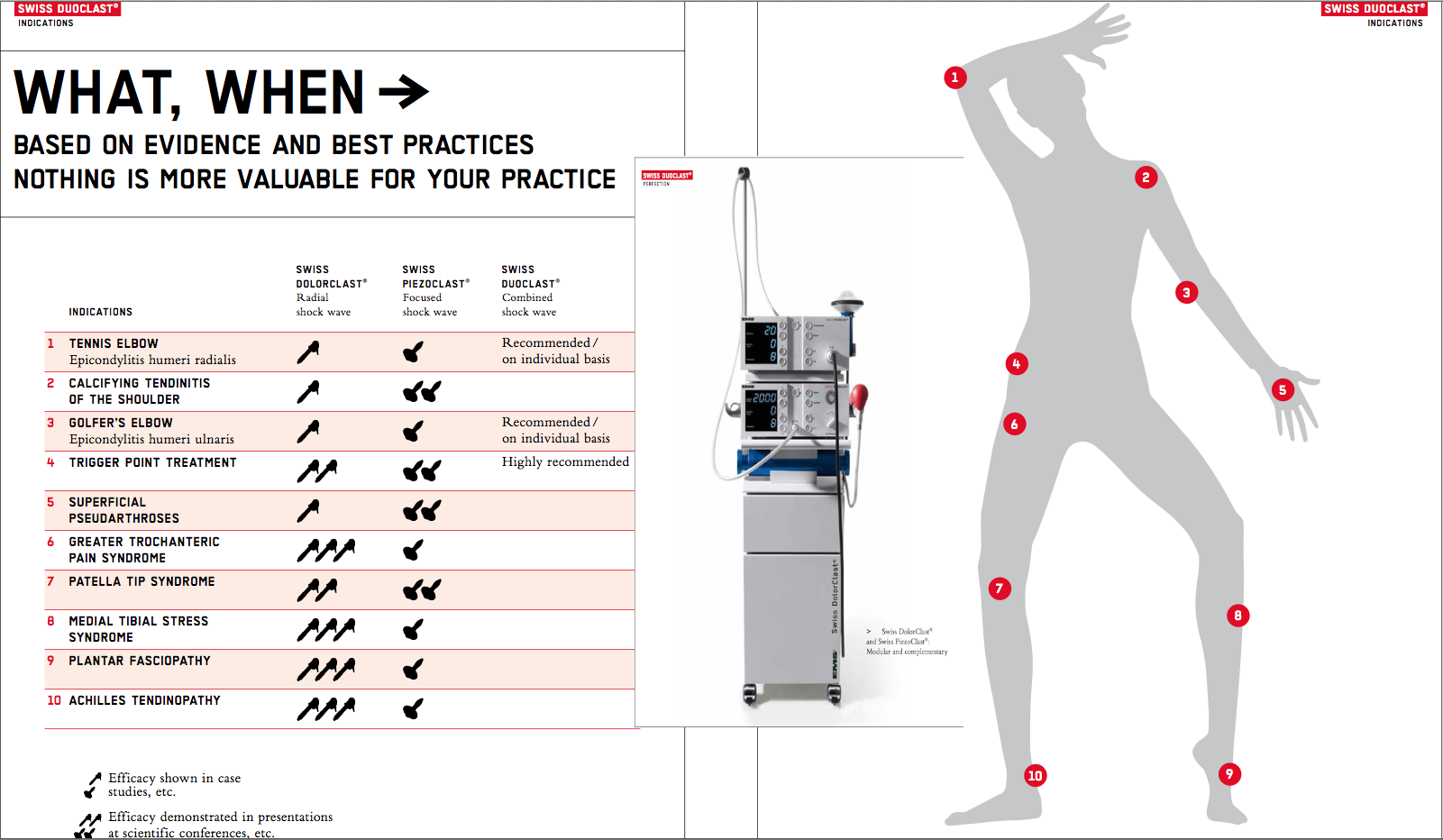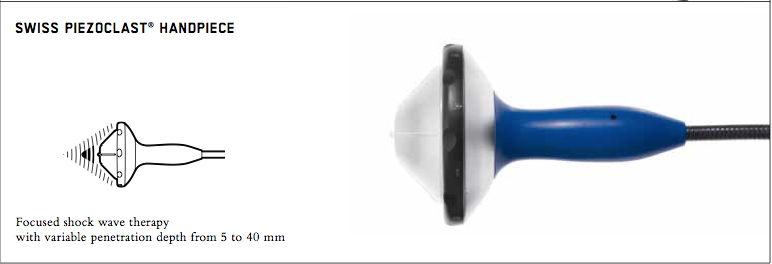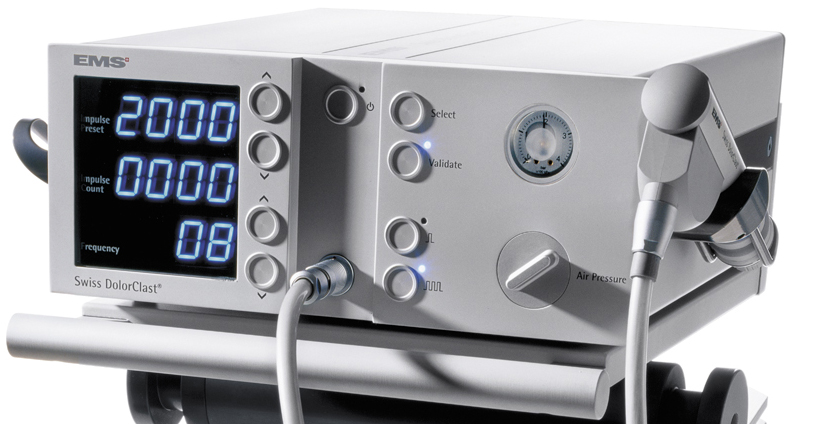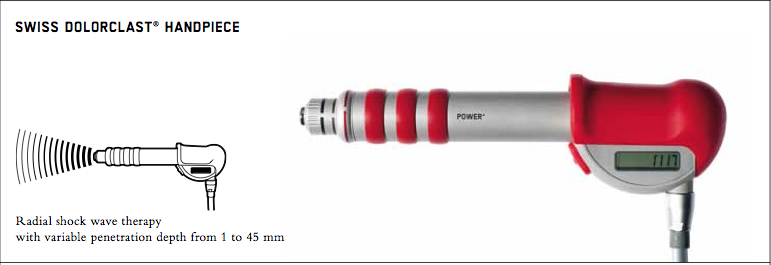
What can be treated with Swiss DolorClast® method therapy?
The following indications are currently treated:
How long has Swiss DolorClast® been available?
The device has been on the market since autumn of 1999. The EMS Swiss DolorClast® device is the only FDA approved device available.
Can arthritis be treated with Swiss DolorClast® method treatment?
There is a growing body of research that shows that degenerative arthritis responds well to the Swiss DolorClast® method treatment. Many physicians also successfully treat other disease types with Radial Shockwaves® and the Swiss DolorClast® Duoclast. However, the Swiss DolorClast® Academy (SDCA )can only provide information on applications confirmed by numerous studies.
Can this therapy be accomplished after unsuccessful treatment with traditional methods?
Yes, in such cases in particular it has been scientifically documented remarkable results.
What is the treatment process with Swiss DolorClast® method treatment?
First the physician palpates the affected areas in consultation with the patient. Contact gel is applied to improve transmission of the shockwave into the tissue. Then the physician moves the shockwave applicator over the prepared site.
Is the treatment painful?
Sensitivity to pain varies from patient to patient and treatments are carried out within patient tolerance levels. Best results occur when the treatment is conducted without anaesthetics.
What side effects could occur?
After a treatment session harmless swellings, blue spots or pain may be experienced, all of which disappear in a short time. To alleviate most of these we usually follow each treatment with ultrasound therapy or use kinesiotape.
Will my pain really be gone after three to five sessions?
Many patients report relief from pain after the first session. However, there have been some isolated cases in which an improvement has only been experienced some weeks after the third treatment. One should remember that everybody responds differently.
As with all kinds of treatment, nobody one can guarantee anything. Even an operation cannot guarantee freedom from pain.

Golfers elbow or Medial Epicondylitis
Painful inflammation of the tendon attachment on the medial elbow
Rotator Cuff Tendonopathy & Calcific Tendonitis
Painful limitation of shoulder movement due to inflammation with or without calcification
Tennis elbow or Lateral Epicondylitis
Painful inflammation of the tendon attachment on the lateral elbow
Lateral Hip pain Syndrome or Trochanteric Bursitis
Painful periostitis of the outer femur and gluteal muscle insertions. This chronic hip pain - may also be associated with low back pain syndrome
Patella tendonitis, Patella tip syndrome, Jumper's knee or Runner's knee
Inflammation of the point of attachment of the patellar ligament
Tibalis Anterior Syndrome
Inflammation of the tibial edge due to excessive strain common amongst runners (aka Shin splints)
Achilles Tendonitis
Painful irritation of the Achilles tendon and recurrent lower calf pain
Plantar Fascitis and Heel Spur
Painful, mostly chronic inflammation of the plantar fascia leads to and results in the formation of heel spurs
Chronic Enthesiopathies (Tendonitis problems)
Painful irritation of tendon attachments due to overexertion or improper strain, or due to degenerative processes
Acupuncture points
Pain therapy via treatment of acupuncture points
Painful trigger points
Acute and chronic pain in the back, shoulder, neck, etc. due to permanently shortened and thickened muscles